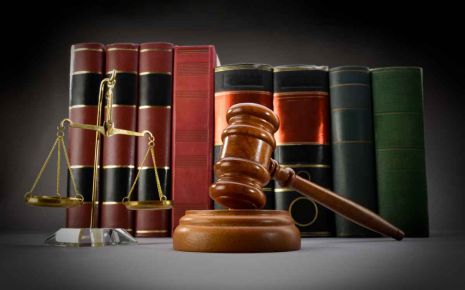Custodial Violence in India: Unveiling a Disturbing Reality
The serious problem of custodial violence in India's legal system is highlighted
in this article. The paper examines the numerous manifestations and root causes
of incarceration violence, highlighting the urgent requirement for thorough
change. It examines pertinent court rulings that have set rules and victim
compensation rights, such as the State of West Bengal v. D.K. Basu and Nilabati
Behera v. the State of Orissa.
he essay also discusses the drawbacks of protracted imprisonments, such as the degradation of inmates' living circumstances and the infringement of their right to a fair trial. It also looks at how frequently violence and torture are used as investigative techniques as well as their negative impacts on both victims and society.
The paper offers legislation changes, law enforcement training programmes, independent supervision structures, public awareness campaigns, and enough victim assistance to address custodial abuse. Case law is used to illustrate how the judiciary recognised and dealt with this problem. The essay ends by calling for cooperation between the government, law enforcement, civil society, and the general public to end violence against prisoners and promote human rights in the criminal justice system.
Once an FIR is logged or a crime is committed, the immediate next step taken by the police is the arrest of the accused. It can be done with or without a warrant. In the cases where the arrest has taken place, the investigation begins and if the arrest is done without a warrant, According to Section 56 of the Cr.P.C., the police officer who arrests the accused without a warrant should take that person to the Magistrate or Officer who is in charge of the police station, without any delays.
Custodial Violence is a serious human rights issue that continues to cause violence in India's justice system. It includes torture, ill-treatment and extrajudicial executions by the police during detention. Despite the recognition of laws and international agreements, prison violence remains an urgent problem that requires urgent attention and comprehensive reform. This article shows the details, causes, consequences and steps to fix the deep problem.
The problem of harassment and nonhuman treatment is faced by many accused who remain in police custody. Section 167 of CRPC provides the police to have the accused remanded if the investigation is not complete within 24hrs and if the police think that the accusation is well-informed. The maximum period of police custody can only be 15 days.
The people kept in custody have faced violence and been a victim of torture. Custodial viciousness alludes to brutality in police guardianship and legal authority. Other forms of custodial violence include rape, torture, and the death penalty. Custodial brutality is not a new peculiarity.
The delay in trials is the main reason for prisoners' bad and degrading conditions. The condition of the Indian prisons. The right to a fair trial is adversely affected by prolonged detention since it prevents adequate legal representation. It also places a significant financial strain on the State. Beyond the psychological harm of confinement, the "deplorable" conditions of Indian prisons, and the socioeconomic toll on the defendants' families, pre-trial detention, in theory, violates the right not to be punished before a competent court pronounces guilt.
The rejection of bail applications by the courts adds fuel to this situation. Though section 167 of CrPC states that after 90 days, bail becomes a right and must be granted, the accused remain in custody on various grounds and the doctrine of presumption of innocence is ignored.
Due to the delay in investigation and commencement of trial, the right to life of the accused is breached and harassed. Early Indian Supreme Court precedent recognised the value of expedited proceedings as well as the protection of life and individual liberty provided by Article 21 of the Constitution.
During custody, various cases of violence are used against the accused to force him to speak about what the prosecution wants. Given the likelihood of serving lengthy prison terms and the National Police Commission's report that 60% of these arrests are "unnecessary or unjustified," which the Supreme Court has acknowledged, entering guilty pleas is increasingly seen as the fastest way to secure release. The accused plead guilty, thinking this will provide them with some relaxation and a break from custodial violence.
Prevalence and Forms of Custodial Violence:
Resulting Effects and Implications
Custodial abuse has far-reaching effects that are seriously detrimental to both the victims and society at large. Victims frequently suffer from long-term physical impairments, mental health problems, and even death as a result of their extreme physical and psychological stress. Beyond its immediate effects on the victims, custodial abuse weakens the rule of law, and the public's confidence in law enforcement agencies, and feeds a vicious circle of injustice and violence.
Addressing Custodial Violence: The Way Forward
Custodial violence must be properly addressed through a multifaceted strategy that includes cultural, institutional, and legal reforms. Here are some crucial actions to take into account:
State of West Bengal v. D.K. Basu, 1997:
To prevent custodial violence, the "D.K. Basu Guidelines" were developed in response to this precedent-setting case. The Supreme Court ordered the filing of First Information Reports (FIRs) in situations of wrongful death or torture and emphasized the significance of protecting the rights and dignity of those who are in detention. The required medical evaluation of the accused and the retention of documents to hold the relevant authorities accountable were also included in these rules.
The Supreme Court acknowledged the right to compensate victims of custodial assault or their families in Nilabati Behera v. State of Orissa (1993). The court decided that the state or the authorities in charge of the human rights infringement should pay compensation. The "absolute liability" of the state in circumstances of custodial assault was established by this judgment.
2014's PUCL v. State of Maharashtra:
In this instance, the Supreme Court reaffirmed the significance of preventing custodial violence and the demand for strong measures to do so. To prevent violence against detainees and safeguard their rights, the court ordered that CCTV cameras be installed in police stations and other sites of detention.
State of Haryana v. Sube Singh (2006) The Supreme Court highlighted the importance of the assumption of innocence unless proven guilty in this case. It reaffirmed that torture and physical abuse in detention are grave breaches of human rights and said that law enforcement organizations must operate legally.
Conclusion:
India's criminal justice system is marred by the violence that occurs in jails and prisons. The government, law enforcement authorities, civil society organizations, and the general public must all be fully committed to eliminating this threat by putting thorough changes into place, encouraging accountability, and prioritising respect for people.
Custodial violence is a pervasive issue in India that requires quick attention and extensive reforms. The frequency of extrajudicial executions, abuse, and torture inside the criminal justice system jeopardises human rights, erodes public confidence, and feeds a circle of injustice and violence. Legal, institutional, and social changes are required to address the root causes of incarceration violence, such as a lack of accountability, poor training, and the frequent use of torture as a means of investigation.
Legal measures should be implemented to expressly criminalise such acts, establish protections for prisoners, and ensure the conviction of perpetrators in order to successfully address custodial abuse. To teach law enforcement professionals about human rights, ethics, and alternative investigation approaches, training and capacity-building programmes are crucial. It is necessary to set up independent supervision systems to guarantee accountability and conduct unbiased investigations into claims.
By enlightening the public about their rights, the repercussions of custodial assault, and the value of reporting incidences, sensitization and awareness programmes may empower the general public. For victims to rehabilitate and pursue justice, rehabilitation and support, including medical, psychological, and legal aid, are essential.
Custodial violence must be eliminated, and this involves cooperation from the public, the government, law enforcement, and civil society organisations. India may progress towards a criminal justice system that promotes justice, dignity, and the rule of law for all of its residents by putting these measures into place, encouraging accountability, and placing a priority on respect for human rights. India can only remove the blemish of custodial brutality and create a society that respects and defends the rights of every individual by taking resolute action and making a commitment to reform.
he essay also discusses the drawbacks of protracted imprisonments, such as the degradation of inmates' living circumstances and the infringement of their right to a fair trial. It also looks at how frequently violence and torture are used as investigative techniques as well as their negative impacts on both victims and society.
The paper offers legislation changes, law enforcement training programmes, independent supervision structures, public awareness campaigns, and enough victim assistance to address custodial abuse. Case law is used to illustrate how the judiciary recognised and dealt with this problem. The essay ends by calling for cooperation between the government, law enforcement, civil society, and the general public to end violence against prisoners and promote human rights in the criminal justice system.
Once an FIR is logged or a crime is committed, the immediate next step taken by the police is the arrest of the accused. It can be done with or without a warrant. In the cases where the arrest has taken place, the investigation begins and if the arrest is done without a warrant, According to Section 56 of the Cr.P.C., the police officer who arrests the accused without a warrant should take that person to the Magistrate or Officer who is in charge of the police station, without any delays.
Custodial Violence is a serious human rights issue that continues to cause violence in India's justice system. It includes torture, ill-treatment and extrajudicial executions by the police during detention. Despite the recognition of laws and international agreements, prison violence remains an urgent problem that requires urgent attention and comprehensive reform. This article shows the details, causes, consequences and steps to fix the deep problem.
The problem of harassment and nonhuman treatment is faced by many accused who remain in police custody. Section 167 of CRPC provides the police to have the accused remanded if the investigation is not complete within 24hrs and if the police think that the accusation is well-informed. The maximum period of police custody can only be 15 days.
The people kept in custody have faced violence and been a victim of torture. Custodial viciousness alludes to brutality in police guardianship and legal authority. Other forms of custodial violence include rape, torture, and the death penalty. Custodial brutality is not a new peculiarity.
The delay in trials is the main reason for prisoners' bad and degrading conditions. The condition of the Indian prisons. The right to a fair trial is adversely affected by prolonged detention since it prevents adequate legal representation. It also places a significant financial strain on the State. Beyond the psychological harm of confinement, the "deplorable" conditions of Indian prisons, and the socioeconomic toll on the defendants' families, pre-trial detention, in theory, violates the right not to be punished before a competent court pronounces guilt.
The rejection of bail applications by the courts adds fuel to this situation. Though section 167 of CrPC states that after 90 days, bail becomes a right and must be granted, the accused remain in custody on various grounds and the doctrine of presumption of innocence is ignored.
Due to the delay in investigation and commencement of trial, the right to life of the accused is breached and harassed. Early Indian Supreme Court precedent recognised the value of expedited proceedings as well as the protection of life and individual liberty provided by Article 21 of the Constitution.
During custody, various cases of violence are used against the accused to force him to speak about what the prosecution wants. Given the likelihood of serving lengthy prison terms and the National Police Commission's report that 60% of these arrests are "unnecessary or unjustified," which the Supreme Court has acknowledged, entering guilty pleas is increasingly seen as the fastest way to secure release. The accused plead guilty, thinking this will provide them with some relaxation and a break from custodial violence.
Prevalence and Forms of Custodial Violence:
- Lack of accountability:
A culture of impunity prevails due to insufficient oversight and accountability. The failure to investigate, prosecute and punish the perpetrators promptly and fairly has led to the dissatisfaction of the authorities.
- Inadequate training and resources:
Inadequate training in human rights, arresting suspects, and investigation processes can lead to excessive police use of force and child abuse. In addition, overcrowded prisons and inadequate resources lead to increased stress and violence.
- Prevalence of torture as an investigative tool:
The use of force, including torture, to obtain confessions and gather information is common practice. This is due to a false belief that this method leads to faster results despite evidence to the contrary.
Resulting Effects and Implications
Custodial abuse has far-reaching effects that are seriously detrimental to both the victims and society at large. Victims frequently suffer from long-term physical impairments, mental health problems, and even death as a result of their extreme physical and psychological stress. Beyond its immediate effects on the victims, custodial abuse weakens the rule of law, and the public's confidence in law enforcement agencies, and feeds a vicious circle of injustice and violence.
Addressing Custodial Violence: The Way Forward
Custodial violence must be properly addressed through a multifaceted strategy that includes cultural, institutional, and legal reforms. Here are some crucial actions to take into account:
- Legal reforms:
Strengthening the legal system by passing comprehensive legislation that expressly criminalizes violence against detainees, offers protections for them, and assures that offenders will be successfully prosecuted.
- Training and capacity-building:
To lessen the use of torture, law enforcement professionals should undergo regular and thorough training programmes that concentrate on human rights, ethics, and non-torture investigative methods.
- Establishing independent supervision systems, such as ombudspersons, special investigative units, and police complaints agencies, to objectively look into claims of custodial brutality and enforce responsibility.
- Sensitization and awareness campaigns can help victims and inspire a group effort to stop such abuses by educating the public about their rights, the effects of custodial abuse, and the necessity of reporting incidences.
- Victims of custodial abuse should get proper medical, psychological, and legal care to promote their rehabilitation and assist their pursuit of justice.
State of West Bengal v. D.K. Basu, 1997:
To prevent custodial violence, the "D.K. Basu Guidelines" were developed in response to this precedent-setting case. The Supreme Court ordered the filing of First Information Reports (FIRs) in situations of wrongful death or torture and emphasized the significance of protecting the rights and dignity of those who are in detention. The required medical evaluation of the accused and the retention of documents to hold the relevant authorities accountable were also included in these rules.
The Supreme Court acknowledged the right to compensate victims of custodial assault or their families in Nilabati Behera v. State of Orissa (1993). The court decided that the state or the authorities in charge of the human rights infringement should pay compensation. The "absolute liability" of the state in circumstances of custodial assault was established by this judgment.
2014's PUCL v. State of Maharashtra:
In this instance, the Supreme Court reaffirmed the significance of preventing custodial violence and the demand for strong measures to do so. To prevent violence against detainees and safeguard their rights, the court ordered that CCTV cameras be installed in police stations and other sites of detention.
State of Haryana v. Sube Singh (2006) The Supreme Court highlighted the importance of the assumption of innocence unless proven guilty in this case. It reaffirmed that torture and physical abuse in detention are grave breaches of human rights and said that law enforcement organizations must operate legally.
Conclusion:
India's criminal justice system is marred by the violence that occurs in jails and prisons. The government, law enforcement authorities, civil society organizations, and the general public must all be fully committed to eliminating this threat by putting thorough changes into place, encouraging accountability, and prioritising respect for people.
Custodial violence is a pervasive issue in India that requires quick attention and extensive reforms. The frequency of extrajudicial executions, abuse, and torture inside the criminal justice system jeopardises human rights, erodes public confidence, and feeds a circle of injustice and violence. Legal, institutional, and social changes are required to address the root causes of incarceration violence, such as a lack of accountability, poor training, and the frequent use of torture as a means of investigation.
Legal measures should be implemented to expressly criminalise such acts, establish protections for prisoners, and ensure the conviction of perpetrators in order to successfully address custodial abuse. To teach law enforcement professionals about human rights, ethics, and alternative investigation approaches, training and capacity-building programmes are crucial. It is necessary to set up independent supervision systems to guarantee accountability and conduct unbiased investigations into claims.
By enlightening the public about their rights, the repercussions of custodial assault, and the value of reporting incidences, sensitization and awareness programmes may empower the general public. For victims to rehabilitate and pursue justice, rehabilitation and support, including medical, psychological, and legal aid, are essential.
Custodial violence must be eliminated, and this involves cooperation from the public, the government, law enforcement, and civil society organisations. India may progress towards a criminal justice system that promotes justice, dignity, and the rule of law for all of its residents by putting these measures into place, encouraging accountability, and placing a priority on respect for human rights. India can only remove the blemish of custodial brutality and create a society that respects and defends the rights of every individual by taking resolute action and making a commitment to reform.
Law Article in India
Legal Question & Answers
Lawyers in India - Search By City
LawArticles
How To File For Mutual Divorce In Delhi

How To File For Mutual Divorce In Delhi Mutual Consent Divorce is the Simplest Way to Obtain a D...
Increased Age For Girls Marriage

It is hoped that the Prohibition of Child Marriage (Amendment) Bill, 2021, which intends to inc...
Facade of Social Media

One may very easily get absorbed in the lives of others as one scrolls through a Facebook news ...
Section 482 CrPc - Quashing Of FIR: Guid...

The Inherent power under Section 482 in The Code Of Criminal Procedure, 1973 (37th Chapter of t...
The Uniform Civil Code (UCC) in India: A...

The Uniform Civil Code (UCC) is a concept that proposes the unification of personal laws across...
Role Of Artificial Intelligence In Legal...

Artificial intelligence (AI) is revolutionizing various sectors of the economy, and the legal i...








Please Drop Your Comments